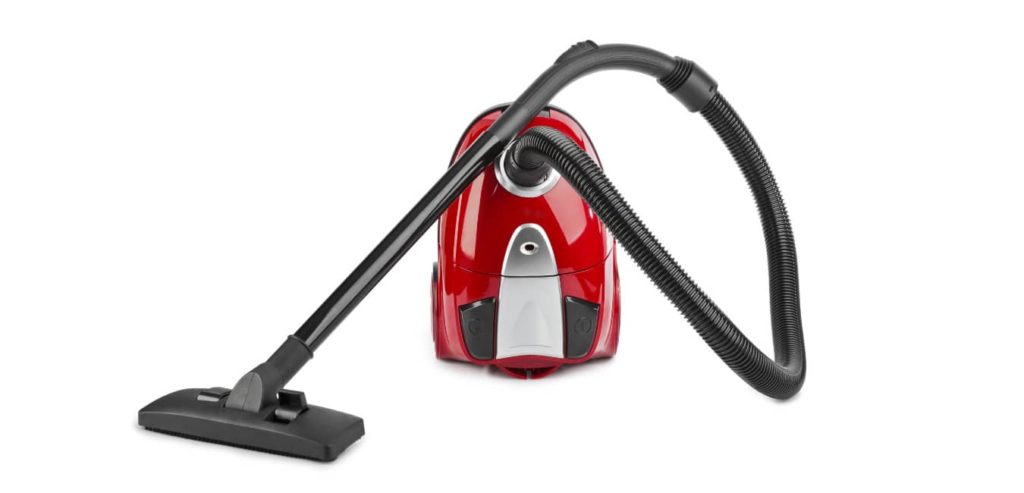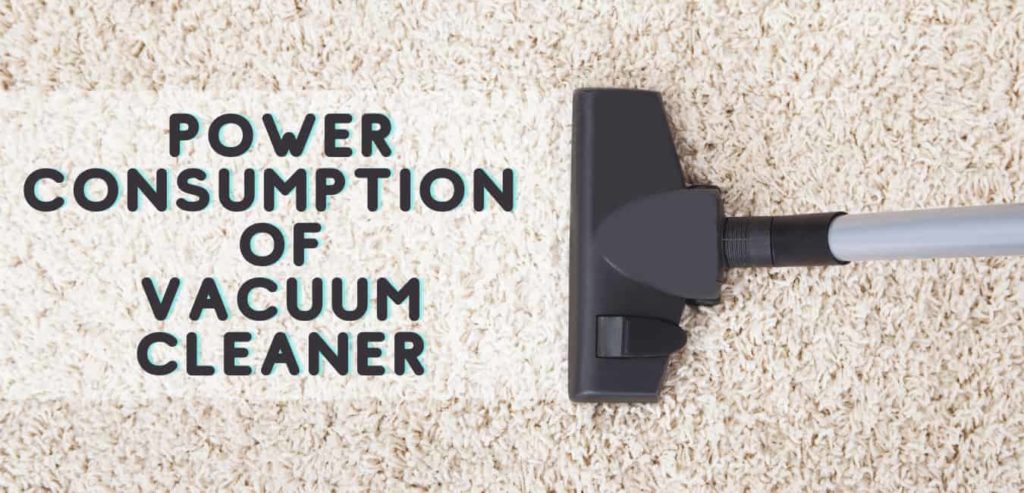Getting to know the Power Consumption of vacuum cleaner can help users save big time on electric bills. However, before we get into the actual business of calculating the Power, let us understand a bit more about this home appliance:
Contents
- The Vacuum Cleaner
- Vacuum Cleaner Energy Consumption
- The Watt Number of the Vacuum Cleaner
- Power of the Vacuum and the Function it Performs
- The Performance Of The Vacuum Cleaner
- How to Save Electricity When Using the Vacuum Cleaner
- Power Consumption of Vacuum Cleaner: FAQs
- Power Consumption of Vacuum Cleaner: The Conclusion
The Vacuum Cleaner

Walter Griffiths invented the first-ever vacuum cleaner or the cleaning machine in 1905. The function of this appliance is a simple one; to suck in the debris off the floor surface. While the earliest known design was a basic one, the vacuum cleaner has come a long way since then. Today, the market is brimming with cut-throat competition among each other to offer the best to the user. To reach the ‘top-rank, most brands are focusing on the prime factor of the machine: the vacuum cleaner energy consumption. This is that ‘one’ feature that can lead a brand to eclipse all competition in the current market.
Also Read: Best Vacuum Cleaners in India
Vacuum Cleaner Energy Consumption

Before we get into calculating the electric consumption of the vacuum cleaner, let us take a look at the important terms used:
The Wattage (W): This is the Power used by a certain device, usually at the bottom surface of the appliance
Cost Per Unit (kWh): This is the average cost per unit of the appliance as charged by the electric utility.
Units Per day: This is the number of units of electricity which is consumed by the appliance in a day. This is calculated according to the hours per day operation.
Hours of Usage: A simple one, the number of hours the device is operating in a single day.
The power consumption of the device for I year:
Number of hours of use X Number of days of use X the wattage of the appliance/1000 = Power in kWh
The cost of the yearly consumption of the vacuum cleaner:
Price per kWh X Consumption in Watts = Annual consumption
The most basic formula for calculating the Power of the device is:
Watts (W)= Volts (V) X Amps (I)
Certain websites offer instant calculations for your device. You simply have to enter the required data at the specified spaces provided.
Also Read: 12 Best Air Purifiers in India
The Watt Number of the Vacuum Cleaner
This is perhaps one of the most important aspects of the device when calculating the vacuum cleaner energy consumption. This specific data allows the reader into the exact electricity consumption of the vacuum cleaner or any other electronic device. Nevertheless, one must bear in mind that the electric consumption rate is directly dependant upon the ‘make’ of the device. Research has shown that when the nozzle and the device match in design, have an aerodynamic shape, they are known to be more efficient in the process of cleaning.
Power of the Vacuum and the Function it Performs
Despite the vacuum cleaner being generally effective in its function; there is specified functions/efficiency according to the Power they possess:
A 350 W Vacuum cleaner: This suction power is efficient enough to clear the linoleum, tiles, parquet, and smooth surfaces.
A 400 W Vacuum Cleaner: This is effective for the cleaning of carpet and can effectively suck in the massive amount of dust. Also effective in clearing up animal hair if there are pets in the house.
450 W and Above Vacuum Cleaner: Is effective for long pile coverings, upholstered furniture, and carpets of varying thickness.
The Performance Of The Vacuum Cleaner
Now that we have understood the basics, data, and calculations of the vacuum cleaner, let us understand the performance of the device. More importantly, it is important to understand what affects the performance of the vacuum cleaner:
The Vacuum Suction:
This is the volume of the air as powered by the motor of the device. The more suction, the better is the cleaning power of the device. The Suckometer Gauge can measure the suction power.
Vacuum Airflow:
The vacuum airflow is measured in CFM or the Cubic feet per minute. This is the measurement of the volume of the air that is being displaced in a system. The airflow is responsible for the movement of the dirt on the floor, and the suction has picked up.
Hence, the Vacuum Suction and Vacuum Airflow work together to offer the ultimate performance of the vacuum cleaner.
How to Save Electricity When Using the Vacuum Cleaner
Let us take a look at the factors that you can practice to save electricity when using the vacuum cleaner:
The Energy Efficient Model: As mentioned earlier, replacing an outdated model with a more energy-efficient one is a wise decision. Refer to the Star rating on the top of the device for a better understanding. The Five-star ratings are the most efficient ones.
Maintaining the Dust Filter: As common sense might dictate it, the dust filter needs to be cleared out and dusted for it to work efficiently.
Maintaining the Motor Filter: A much-required step, as the dust when enters the motor filter can greatly affect its performance.
Regular Changing of the Bags: It is necessary to keep changing the bags if and when required, as they can easily get blocked and hence, consume more electricity when under operation.
Power Consumption of Vacuum Cleaner: FAQs
Energy consumption depends upon the model of the device, its maintenance, and the rate of use.
Number of Hours X Power in Watts = Value in kWh
The Cordless Vacuum cleaners are the most energy-efficient ones.
Power Consumption of Vacuum Cleaner: The Conclusion
The power consumption of the vacuum cleaner is an important aspect of the utility of the appliance. While buying the best in the market is the obvious choice nevertheless, it should not suck in your savings along with the dirt you are trying to clean. Hence, take time out to notice the power consumption of the device before you make the final purchase. It is often stated atop the box; if not, now you have a formula in hand to do your quick calculations.
Related Post: